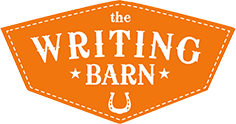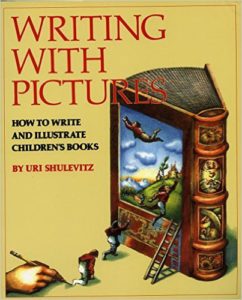Writing with Pictures: How to Write and Illustrate Children’s Books by Uri Shulevitz
Book Rec by Rebekah Manley
Where do you get the best book recommendations? From other writers! So welcome to a new blog series at The Writing Barn: WB Book Recs. These reviews come from writers deeply engaged in process, content and craft. Today, author WB attendee Rebekah Manley shares her thoughts on Uri Shulevitz’s Writing with Pictures: How to Write and Illustrate Children’s Books.
This book, written by author/illustrator Uri Shulevitz, gave excellent examples and tips for writing with pictures. It really helped ground the writer with examples of how to utilize words for picture books. Here are some of the important questions raised in the book:
- Is the story told with clarity?
- Are the characters unique?
- Is the setting specific?
- Is the ending consistent with the beginning?
- Does the story adhere to a unified code?
- Has the book achieved the right blend of spontaneity and planning?
- Is the book’s form an organic outgrowth of its content?
Shulevitz helps illustrate how the picture sequence involves an actor and a stage. He pointed out that some authors would be surprised to learn that their stories may not be complete actions. “Today, so many stories in books and films are merely a series of sequences, or extended sequences…” He discussed how an action or theme needs a unifying link that strings development from beginning to end. He also talked about the satisfaction that comes with endings for children – how the story must “feel complete” at the end. One way to get there: “Be what you write about. You should empathize with everything in your story; nothing is insignificant, nothing is forgotten or neglected.” Shulevitz helped me understand arc and its relation to the stages of change:
- The beginning presents the reason or motivation for the change
- The middle shows the change in process
- The end brings the change to a conclusion and shows its consequences
He narrowed down his ‘picture book characteristics’ into categories such as lively heroes, visible actions, linear continuity, time, pauses, no ‘loose’ threads, consistency, etc. He also worked to break down the illustration process. Shulevitz’s concrete approach to explaining the craft and necessary considerations for illustrators really reminds writers to look at their manuscripts on a more global level.
After Rebekah studied Public Relations at Grand Canyon University, she worked for Carnival Cruise lines as a Social Hostess and an Assistant Cruise Director. She couldn’t shake the dream of writing to inspire and delight children and earned her Master of Fine Arts in Children’s Literature from Hollins University.
Aside from her Children’s literature career, Rebekah is the Coordinator for the Texas Center for the Book at the Texas State Library and Archives Commission; under the Library of Congress. In Rebekah’s website, Brave Tutu, she hopes readers will “take courage in delight and discover power in small moments.”


